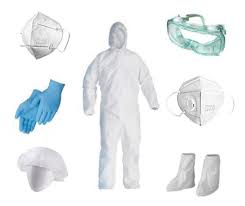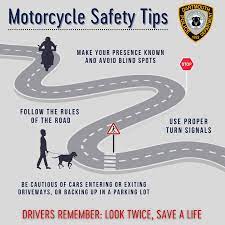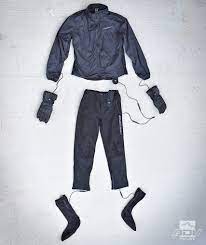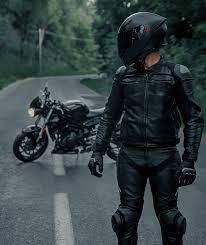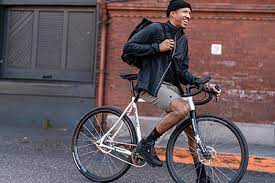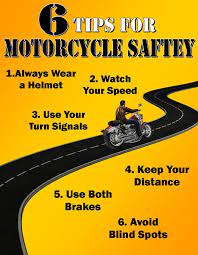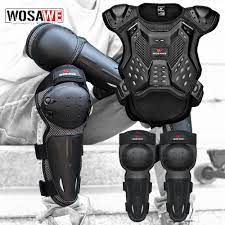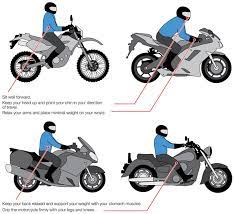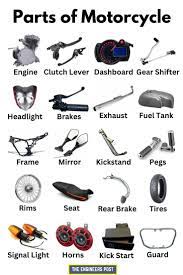
Motorcycle Accessories: Enhancing Your Riding Experience
When it comes to motorcycles, it’s not just about the bike itself, but also the accessories that can enhance your riding experience. Whether you’re a seasoned rider or a beginner, investing in quality motorcycle accessories can make your journeys safer, more comfortable, and even more stylish.
One essential accessory for any rider is a helmet. Safety should always be a top priority, and a good helmet provides protection for your head in case of an accident. Look for helmets that meet safety standards and fit comfortably on your head. With various styles and designs available, you can also find one that matches your personal taste.
Another important accessory is protective gear. Riding jackets, pants, gloves, and boots are designed to provide protection from the elements and potential injuries. Look for gear made from high-quality materials with reinforced padding in critical areas. Not only do they offer protection, but they also add an element of style to your riding attire.
For those who enjoy long rides or touring adventures, motorcycle luggage becomes essential. Saddlebags or tail bags offer convenient storage space for carrying essentials like clothes, tools, and other personal items. Look for bags that are durable and waterproof to protect your belongings from the elements.
Comfort is key during long rides, which is why investing in ergonomic accessories is worth considering. Motorcycle seats with added cushioning or gel inserts can reduce fatigue and provide better support during extended periods on the road. Additionally, handlebar grips with vibration dampening properties can reduce hand fatigue caused by road vibrations.
Enhancing visibility is crucial for safety on the road. Upgrading your motorcycle’s lighting system with brighter bulbs or installing additional auxiliary lights can greatly improve visibility during night rides or adverse weather conditions. Reflective decals or strips on your bike can also increase visibility to other motorists.
For those who enjoy listening to music while riding, motorcycle-specific audio systems come in handy. Bluetooth-enabled helmet speakers allow you to listen to your favorite tunes or receive GPS instructions without compromising safety. These systems are designed to fit seamlessly into your helmet, providing a clear and immersive audio experience.
Lastly, let’s not forget about style. Motorcycle accessories can help you personalize your ride and make a statement. From custom decals and graphics to chrome accents or aftermarket exhausts, there are countless options available to add a touch of individuality to your bike.
When it comes to motorcycle accessories, the choices are vast and varied. It’s important to prioritize safety, comfort, and functionality while selecting the accessories that suit your riding style and needs. Whether you’re looking for added protection, convenience, or style, investing in quality motorcycle accessories can greatly enhance your riding experience. So gear up, stay safe, and enjoy the open road with confidence!
Essential Tips for Motorcycle Accessories: Prioritizing Safety, Gear, Visibility, Luggage, Comfort, Communication, Security, and Maintenance
- Safety First
- Protective Gear
- Visibility Enhancements
- Luggage Options
- Comfortable Seating
- Communication Systems
- Security Measures
- Maintenance Tools
Safety First
Safety First: The Importance of Motorcycle Accessories
When it comes to riding motorcycles, safety should always be the top priority. One of the best ways to ensure your safety on the road is by investing in high-quality motorcycle accessories. These accessories not only enhance your riding experience but also provide essential protection in case of an accident.
One key accessory that should never be overlooked is a helmet. Wearing a helmet is not just a legal requirement in many places, but it’s also a crucial safety measure. A good helmet can protect your head from serious injuries and even save your life. Look for helmets that meet safety standards and fit properly to ensure maximum protection.
Protective gear is another vital aspect of motorcycle safety. Riding jackets, pants, gloves, and boots are designed to shield you from the elements and potential injuries. They provide added protection for your body in case of a fall or collision. Investing in gear made from durable materials with reinforced padding can significantly reduce the risk of injury.
Visibility is also crucial for safe riding. Upgrading your motorcycle’s lighting system with brighter bulbs or installing additional lights can greatly improve visibility, especially during low-light conditions or bad weather. Reflective decals or strips on your bike can also make you more visible to other motorists on the road.
Proper storage solutions are essential for long rides or commuting. Saddlebags or tail bags offer convenient storage space for carrying essentials, keeping them secure while you focus on the road ahead. Having all your belongings properly stored prevents any distractions caused by loose items during the ride.
Comfort plays a significant role in staying safe on long rides as well. Ergonomic accessories like cushioned seats and vibration-dampening handlebar grips reduce fatigue and increase control over your bike. When you’re comfortable, you can stay focused and react quickly to any unexpected situations that may arise.
Remember, accidents can happen at any time, even if you’re an experienced rider. By prioritizing safety and investing in quality motorcycle accessories, you’re taking proactive steps to protect yourself on the road. Don’t compromise on your safety; make sure you have the necessary gear to ride with confidence.
In conclusion, safety should always be the first consideration when it comes to riding motorcycles. By wearing a helmet, using protective gear, enhancing visibility, ensuring proper storage, and prioritizing comfort, you’re taking important measures to keep yourself safe. So, before you hit the road, make sure you have the right motorcycle accessories in place. Ride smart, ride safe!
Protective Gear
Protective Gear: Safeguarding Your Ride
When it comes to motorcycle accessories, one category stands out for its crucial role in rider safety – protective gear. Riding a motorcycle can be an exhilarating experience, but it’s essential to prioritize safety by investing in the right gear.
The most fundamental piece of protective gear is a helmet. It’s not just a legal requirement in many places; it’s a lifesaver. A helmet protects your head from potential injuries during accidents, reducing the risk of severe trauma. Look for helmets that meet safety standards and fit properly for maximum protection.
In addition to helmets, riding jackets, pants, gloves, and boots are essential components of protective gear. These items provide protection against abrasions, impacts, and weather conditions. Look for gear made from durable materials with reinforced padding in critical areas like elbows, shoulders, knees, and ankles.
Riding jackets are designed to offer protection without compromising comfort or style. Look for jackets with features like ventilation systems to keep you cool during hot rides and waterproof capabilities to keep you dry in wet weather. Additionally, jackets with reflective elements enhance visibility on the road.
Gloves are crucial for protecting your hands from injuries and providing better grip on the handlebars. Look for gloves made from high-quality materials that offer abrasion resistance and impact protection while allowing flexibility and dexterity.
When it comes to riding pants, choose options that provide both comfort and protection. Pants with reinforced knee and hip areas offer added security during falls or slides. Additionally, consider pants with ventilation features or removable liners for adaptability in different weather conditions.
Boots designed specifically for motorcycle riding provide ankle support and protect your feet from impacts or injuries. Look for boots that are sturdy yet comfortable enough for long rides. Non-slip soles are also important to maintain stability while stopping or maneuvering the bike.
Investing in quality protective gear is an investment in your safety as a rider. It’s important to choose gear that fits properly and meets safety standards. Remember, accidents can happen anytime, and having the right gear can significantly reduce the risk of severe injuries.
Protective gear not only safeguards your body but also boosts your confidence on the road. When you know you’re well-protected, you can focus more on enjoying the ride and less on potential risks.
So, whether you’re a seasoned rider or just starting your motorcycle journey, don’t compromise on protective gear. Prioritize safety by investing in helmets, jackets, gloves, pants, and boots that offer optimal protection without sacrificing comfort or style. Ride safe, ride protected!
Visibility Enhancements
Visibility Enhancements: Enhancing Safety on Two Wheels
When it comes to riding motorcycles, safety should always be a top priority. One crucial aspect of rider safety is visibility. Enhancing visibility on your motorcycle not only helps you see better but also ensures that other motorists can see you clearly on the road. That’s where visibility enhancements in the form of motorcycle accessories come into play.
One effective way to improve visibility is by upgrading your motorcycle’s lighting system. Brighter bulbs or installing additional auxiliary lights can make a significant difference, particularly during night rides or in low-light conditions. These improvements help illuminate the road ahead and make your presence more noticeable to other drivers.
Reflective decals or strips are another simple yet effective way to enhance visibility. By applying these reflective elements strategically on your bike, they catch and reflect light, making you more visible from various angles. This added visibility can greatly reduce the risk of accidents, especially during dusk or dawn when lighting conditions are challenging.
Donning high-visibility gear is also a smart move for riders concerned about their safety. Jackets, vests, or helmets with fluorescent colors and reflective panels increase your visibility to others on the road. These eye-catching garments ensure that you stand out from the surrounding environment, making it easier for drivers to spot you even from a distance.
Another popular accessory for improving visibility is daytime running lights (DRLs). DRLs are designed to increase your presence on the road during daylight hours by providing an extra layer of illumination. They not only make you more visible but also add a modern touch to your bike’s overall aesthetics.
When considering visibility enhancements, it’s essential to choose accessories that meet quality standards and are compatible with your motorcycle model. Consult with reputable retailers or seek advice from experienced riders who can guide you towards reliable options.
Remember, enhancing your visibility is not just about ensuring your own safety but also being considerate towards other road users. By making yourself more visible, you contribute to a safer riding environment for everyone.
So, whether you’re a seasoned rider or just starting out, investing in visibility enhancements is a wise decision. By upgrading your motorcycle’s lighting system, utilizing reflective elements, and wearing high-visibility gear, you can significantly reduce the risk of accidents and ride with added confidence on the open road.
Prioritize your safety by enhancing visibility on your motorcycle. Stay visible, stay safe!
Luggage Options
Luggage Options: Enhancing Convenience and Storage for Your Motorcycle Adventures
When it comes to motorcycle accessories, one aspect that can greatly enhance your riding experience is the availability of various luggage options. Whether you’re embarking on a long-distance tour or simply need some extra storage space for your daily commute, having the right luggage can make a world of difference.
One popular choice for motorcycle riders is saddlebags. These bags attach to either side of the bike and provide ample storage space for your belongings. Saddlebags come in different sizes and designs, allowing you to choose the option that best suits your needs. They are typically made from durable materials that are resistant to weather conditions, ensuring that your items stay safe and dry during your ride.
For those who prefer a more temporary luggage solution, tail bags are a convenient option. These bags can be easily attached to the rear seat or luggage rack of your motorcycle using straps or bungee cords. Tail bags come in various sizes and shapes, allowing you to find one that accommodates your specific needs. They offer enough space to carry essentials like clothes, tools, or even groceries.
If you require additional storage capacity but don’t want the hassle of attaching bags to your bike, tank bags might be the perfect choice for you. Tank bags are designed to sit on top of the fuel tank and provide easy access to your belongings while riding. They typically come with clear compartments for maps or GPS devices, allowing you to navigate conveniently during your journey.
For riders who prefer a sleeker look without compromising storage capacity, there are also options like under-seat storage compartments or panniers that blend seamlessly with the design of certain motorcycles. These compartments provide discreet storage solutions while maintaining the aesthetics of your bike.
When choosing luggage options for your motorcycle, it’s important to consider factors like capacity, durability, and ease of attachment. Ensure that the chosen luggage is compatible with your specific bike model and that it doesn’t interfere with your riding comfort or safety.
Having the right luggage options for your motorcycle adventures can greatly enhance convenience and storage capacity. Whether you’re embarking on a weekend getaway or simply need a reliable way to carry your daily essentials, investing in quality motorcycle luggage will make your rides more enjoyable and stress-free. So, pack up and hit the road with confidence, knowing that you have all the storage space you need for your next adventure!
Comfortable Seating
Comfortable Seating: Enhancing Your Riding Experience
One crucial aspect of motorcycle accessories that often gets overlooked is comfortable seating. When it comes to long rides or extended periods on the road, having a comfortable seat can make all the difference in your riding experience.
Riding a motorcycle for hours can put strain on your back, hips, and tailbone. That’s why investing in a seat that provides proper support and cushioning is essential. Look for seats that are ergonomically designed to distribute your weight evenly and reduce pressure points.
Gel inserts or memory foam padding can provide extra comfort by molding to your body shape and absorbing vibrations from the road. These materials help reduce fatigue and prevent discomfort during long rides, allowing you to focus on enjoying the journey rather than feeling sore.
Another factor to consider is seat height. Finding the right seat height for your body type and riding style is important for maintaining proper posture and control over your bike. Adjustable seats or aftermarket options with different height options can help you achieve the optimal riding position.
Additionally, some seats come with features like built-in heating elements or ventilation systems. These can be particularly useful during extreme weather conditions, providing warmth in colder temperatures or keeping you cool in hot weather.
Comfortable seating not only enhances your physical well-being but also contributes to mental relaxation while riding. When you’re not constantly shifting around trying to find a comfortable position, you can focus more on enjoying the scenery and being present in the moment.
Remember that every rider has unique preferences when it comes to seating comfort. What works for one person may not work for another. Take the time to test different seats or seek recommendations from fellow riders who have similar needs or preferences.
Investing in a comfortable seat may require some financial commitment, but it’s an investment in your overall riding experience and enjoyment. So, whether you’re planning a long-distance tour or simply want more comfort during your daily commute, consider upgrading your seat to make your rides more enjoyable and fatigue-free.
Prioritizing comfort through a well-designed and supportive seat is a small change that can have a big impact on your riding experience. So, get ready to hit the road in comfort and style, knowing that you’ve taken the necessary steps to make every ride a pleasure.
Communication Systems
Communication Systems: Stay Connected on the Road
In today’s fast-paced world, staying connected is more important than ever. This holds true even when you’re out on the open road, riding your motorcycle. That’s where communication systems for motorcycles come into play, allowing riders to stay in touch with their fellow riders or receive important information while on the move.
Motorcycle communication systems have come a long way in recent years, offering riders a range of features and capabilities. One of the most common features is intercom functionality, which allows riders to communicate with each other within a certain range. This is especially useful during group rides or when riding with a passenger. With clear and hands-free communication, you can easily coordinate turns, share route information, or simply enjoy conversations without having to shout over the sound of the engine.
Additionally, many communication systems now offer Bluetooth connectivity. This means you can pair your smartphone or GPS device with the system and receive audio instructions or make phone calls without having to stop and fumble with your phone. By keeping your hands on the handlebars and your focus on the road ahead, you can maintain a higher level of safety while still staying connected.
Some advanced communication systems even allow for integration with music players or FM radio stations. This means you can listen to your favorite tunes while riding, adding an extra element of enjoyment to your journey. With noise-canceling technology built into these systems, you can still hear your music clearly even at higher speeds.
When selecting a communication system for your motorcycle, it’s important to consider factors such as range, battery life, ease of use, and compatibility with other devices. Look for systems that are specifically designed for motorcycle use and offer weather resistance to withstand various riding conditions.
Remember that safety should always be a priority when using communication systems on your motorcycle. Make sure to familiarize yourself with the system’s controls before hitting the road and use it responsibly. It’s important to strike a balance between staying connected and maintaining your focus on the road ahead.
In conclusion, motorcycle communication systems have revolutionized the way riders stay connected while on the road. With features like intercom functionality, Bluetooth connectivity, and music integration, these systems offer convenience, safety, and an enhanced riding experience. So gear up with a reliable communication system and enjoy the freedom of the open road while staying connected with your fellow riders and important information.
Security Measures
Security Measures: Protecting Your Motorcycle
When it comes to motorcycle accessories, one aspect that should never be overlooked is security measures. Motorcycles are valuable assets, and unfortunately, they can be a target for theft. By investing in the right security accessories, you can significantly reduce the risk of your bike being stolen and enjoy peace of mind.
One essential security accessory is a sturdy and reliable lock. A high-quality disc lock or chain lock can serve as a powerful deterrent to potential thieves. Look for locks made from hardened steel and with advanced locking mechanisms. Ensure that the lock is visible when installed, as its presence alone can discourage thieves from attempting to steal your bike.
For added protection, consider using a motorcycle cover. Not only does it shield your bike from the elements, but it also conceals it from prying eyes. Opt for covers made of durable materials that are resistant to tampering and have reinforced grommets for securing with a lock or cable.
Installing an alarm system is another effective security measure. Motorcycle-specific alarm systems come equipped with motion sensors and sound an audible alarm if anyone attempts to tamper with your bike. Some advanced models even offer GPS tracking capabilities, allowing you to locate your motorcycle in case of theft.
To further enhance security, consider using a GPS tracking device specifically designed for motorcycles. These devices allow you to track the location of your bike in real-time through smartphone apps or online platforms. In the unfortunate event that your motorcycle is stolen, this technology can greatly assist law enforcement in recovering your valuable asset.
Parking in well-lit areas with high foot traffic is another simple yet effective security measure. Thieves are less likely to target motorcycles parked in busy areas where their actions are more likely to be noticed by passersby or surveillance cameras.
Lastly, don’t forget about securing your helmet and other valuable accessories. Helmet locks or cable locks can prevent opportunistic thefts while you’re away from your bike. Additionally, consider investing in a lockable storage compartment or tank bag to secure smaller items like wallets, phones, or keys.
Remember, prevention is key when it comes to motorcycle security. By investing in the right security accessories and adopting smart practices, you can significantly reduce the risk of theft and protect your prized possession. So take the necessary steps to safeguard your motorcycle and enjoy your rides with peace of mind knowing that you’ve taken measures to keep it safe and secure.
Maintenance Tools
Maintenance Tools: Keeping Your Motorcycle in Top Shape
When it comes to taking care of your motorcycle, having the right maintenance tools is essential. These tools not only make routine maintenance tasks easier but also help keep your bike in top shape, ensuring optimal performance and longevity.
One of the most basic yet crucial tools every motorcycle owner should have is a good set of wrenches and sockets. These versatile tools come in various sizes and are used for tasks such as tightening bolts, adjusting handlebars, or removing components. Investing in high-quality wrenches and sockets will ensure durability and prevent damage to your bike’s fittings.
A torque wrench is another invaluable tool for maintaining your motorcycle. This tool allows you to apply precise torque to fasteners, preventing over-tightening or under-tightening, which can lead to stripped threads or loose components. With a torque wrench, you can confidently tighten critical parts like wheel nuts or engine bolts to the manufacturer’s specifications.
Keeping your motorcycle’s chain properly adjusted and lubricated is crucial for smooth operation. A chain tool is essential for adjusting the tension and removing links when necessary. Additionally, investing in a good quality chain lubricant will help reduce friction and extend the life of your chain.
Regularly checking tire pressure is vital for both safety and performance. A reliable tire pressure gauge allows you to accurately measure the air pressure in your tires. Maintaining proper tire pressure ensures optimal handling, grip, and fuel efficiency while reducing the risk of blowouts or uneven wear.
To perform routine maintenance tasks such as oil changes or filter replacements, having an oil filter wrench and a drain pan is essential. An oil filter wrench ensures a secure grip on the filter during removal or installation without damaging it. A drain pan helps collect used oil cleanly and safely while minimizing environmental impact.
Electrical issues can sometimes arise with motorcycles, so having basic electrical tools like wire cutters/strippers, multimeters, and electrical tape can come in handy. These tools enable you to diagnose and fix electrical problems, ensuring that your bike’s lights, indicators, and other electrical components are functioning properly.
Finally, a sturdy and reliable motorcycle stand is a must-have for performing maintenance tasks that require lifting your bike off the ground. Whether it’s changing tires, inspecting the underside, or cleaning hard-to-reach areas, a stand provides stability and ease of access.
Investing in quality maintenance tools is an investment in the longevity and performance of your motorcycle. By having the right tools on hand, you can confidently tackle routine maintenance tasks, address minor issues promptly, and keep your bike running smoothly. So equip yourself with the necessary tools, follow proper maintenance procedures, and enjoy many miles of trouble-free riding on your well-maintained machine.
